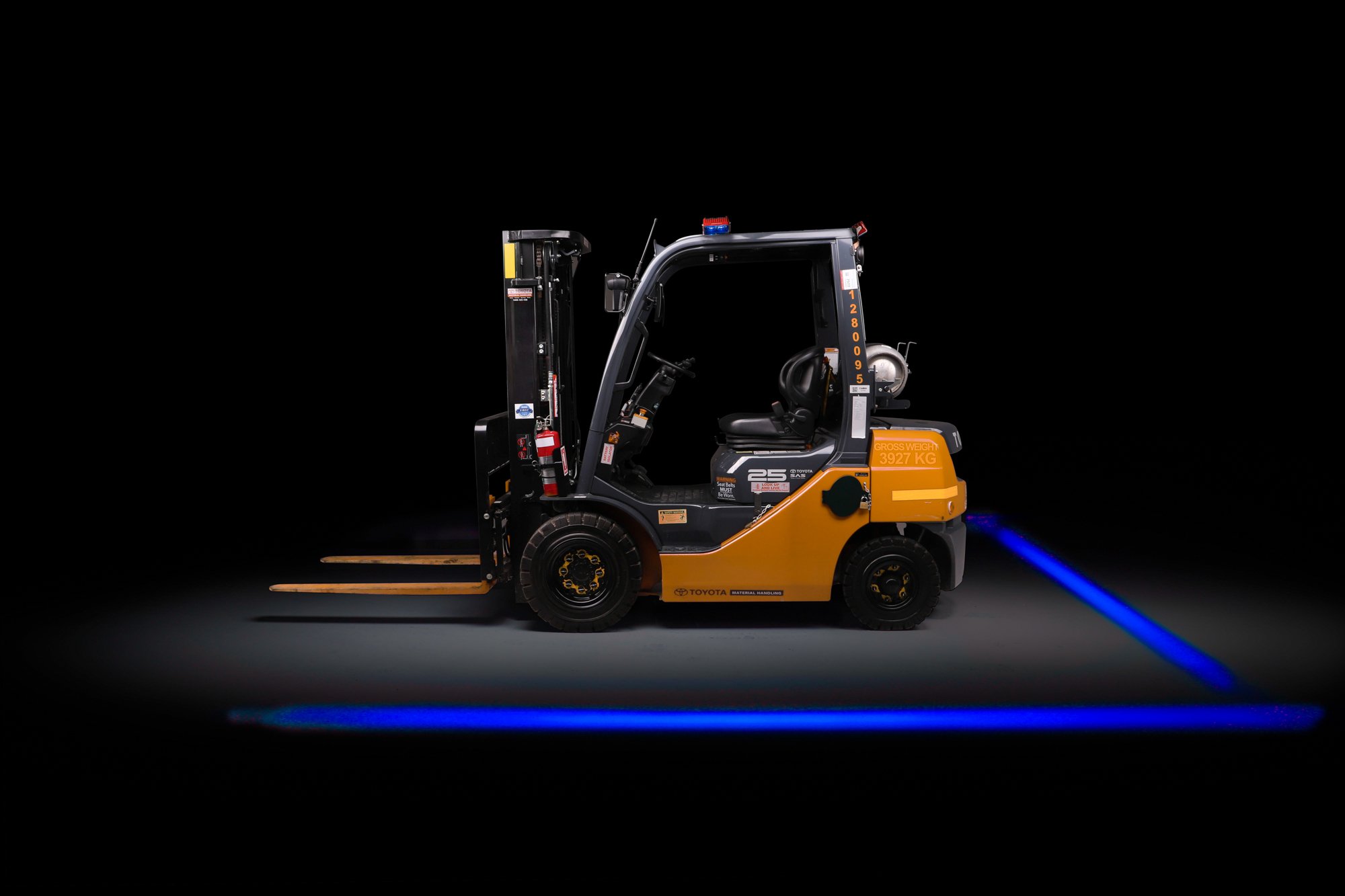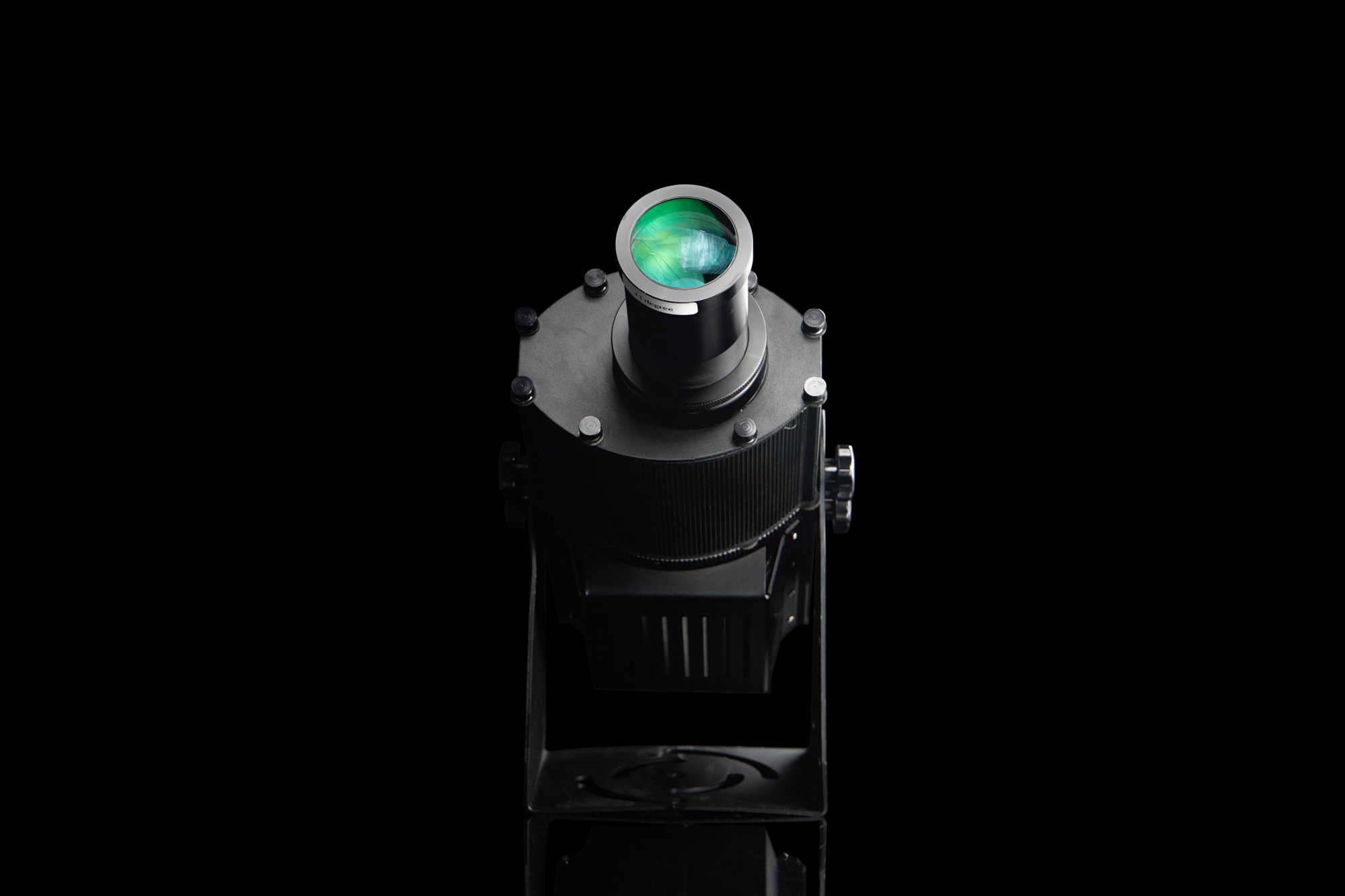SHIPPING PORTS
The shipping port industry relies on heavy machinery like cranes, forklifts, and straddle carriers for efficient cargo handling, but these pose significant safety risks such as collisions, crushing hazards, falls from heights, and ergonomic strains. Environmental factors like weather and noise further complicate safety. The Safety Halo system by Incident Zero mitigates these risks by creating visible exclusion zones using lasers or LED lights. This enhances worker awareness and compliance with safety protocols, reducing accidents and fostering a safer working environment in bustling shipping ports.
Industry overview
The shipping port and terminal industry serves as a crucial hub for global trade, facilitating the import and export of goods through maritime routes. Characterised by its fast-paced operations, this industry relies heavily on a wide array of heavy machinery to efficiently handle cargo. Container cranes, forklifts, straddle carriers, reach stackers, and conveyor systems are among the key equipment used for loading and unloading ships, transferring containers, and managing logistics within the terminal. While essential for operational efficiency, these machines pose significant risks to human safety due to their size, complexity, and the dynamic nature of port operations. Ensuring robust safety measures is imperative to mitigate these risks and maintain a secure working environment amidst the bustling activity of shipping ports and terminals.
Machinery and equipment
In the shipping port industry, several types of machinery are essential for the efficient handling of cargo and smooth operations. These machines include:
Container cranes: Used to lift and move shipping containers between ships and the terminal yard. They are typically large, gantry-style cranes capable of reaching across multiple rows of containers.
Forklifts: used for lifting and transporting cargo within the terminal, including loading and unloading trucks and rail cars, as well as moving containers in the storage yard.
Straddle carriers: These are specialised vehicles used to transport and stack containers in the terminal yard. Straddle carriers can lift containers directly from the ground and manoeuvre between container stacks efficiently.
Reach stackers: Similar to forklifts but designed specifically for lifting and stacking containers vertically. Reach stackers have extended arms and are capable of lifting heavy loads to significant heights.
Terminal tractors (yard trucks): These trucks are used for moving containers short distances within the terminal yard or between different sections of the port.
Ship-to-shore (STS) cranes: Large cranes located at the water’s edge for loading and unloading containers directly from ships. STS cranes are essential for transferring cargo between vessels and the terminal.
Rubber-tired gantry (RTG) cranes: Used to lift and move containers within the storage yard. RTG cranes are mounted on wheels, allowing them to move between container stacks swiftly.
Conveyor systems: Used for transporting bulk cargo, such as grain or coal, from ships to storage facilities or vice versa. Conveyor systems streamline the handling of bulk materials, reducing the need for manual labour.
These machines are crucial for the efficient operation of shipping ports, facilitating the movement of cargo between ships, trucks, and rail, and ensuring that goods are transferred swiftly and safely through the port terminal.
Safety challenges
In the shipping port industry, the operation of heavy machinery presents several common safety challenges:
Collision risks: Given the congested nature of port terminals and the variety of machines operating in close proximity, collisions between different types of machinery, or between machinery and other vehicles (such as trucks or terminal tractors), are significant risks. Poor visibility and blind spots exacerbate these risks.
Crushing and pinch points: The lifting and stacking capabilities of cranes, reach stackers, and straddle carriers pose risks of crushing or pinching operators or ground personnel. Moving containers or cargo can unexpectedly shift, potentially trapping workers.
Falls from heights: Workers operating cranes or working on container stacks face the risk of falls from significant heights. Ensure there isn’t a double fatality or injury by keeping the area below clear from people or machinery.
Overturning or yipping: Equipment such as reach stackers, straddle carriers, and RTG cranes may overturn or tip due to uneven terrain, overloaded containers, or improper operation. This poses risks to both operators and nearby personnel.
Environmental hazards: Ports are exposed to various environmental conditions, including wind, rain, and sometimes extreme weather. These conditions can affect visibility, equipment stability, and overall operational safety of heavy machinery.
Noise and vibration: Heavy machinery in port operations generates significant noise levels and vibrations, which can lead to hearing loss over time and contribute to operator fatigue, leading to a loss of focus on their surroundings.
Safety Halo application
The implementation of the Safety Halo™ system positively influences safe human behaviour by creating visible exclusion zones around operating machinery in environments like shipping ports. These systems use lasers or LED lights to clearly mark out safe areas and alert individuals to potential hazards, such as moving equipment or restricted zones. By providing clear visual cues, the Safety Halo system helps workers and pedestrians intuitively understand where they should and shouldn’t be, reducing the likelihood of accidents and collisions. This proactive approach encourages safe behaviours by enhancing awareness and ensuring compliance with safety protocols, ultimately mitigating risks and fostering a safer working environment in shipping ports.
Laser Safety Halo (Up to 10 m)
Made in USA, the Laser Safety Halo™ is the world’s first exclusion zone for large-scale mobile plant that leverages neuroscience to positively affect human behaviour and induce safety. Built to withstand the rigours of large-scale machinery, our Laser Safety Halo is the most effective exclusion zone system for mobile plant. Our Class 2 range of Laser Safety Halo products can project light up to 10 metres.
Laser Safety Halo (Up to 50 m)
Made in USA, the Laser Safety Halo™ is the world’s first exclusion zone for large-scale mobile plant that leverages neuroscience to positively affect human behaviour and induce safety. Built to withstand the rigours of large-scale machinery, our Laser Safety Halo is the most effective exclusion zone system for mobile plant. Our Class 3R range of Laser Safety Halo products can project light up to 50 metres.
LED Safety Halo
Our original LED Safety Halo™ system offers the brightest LED exclusion zone lighting available by utilising narrow band Cree LED lighting—providing brighter, clearer, and more even light patterns and illumination. With our LED Safety Halo, you can enjoy exceptional performance and reliability due to temperature control design that enables higher power output and greater longevity.
HD LED Safety Halo
Designed for gantry cranes, underground mining, and tunnelling line marking, the HD LED Safety Halo™ provides a line or spot beam for longer distance projections over four metres. Featuring durable construction with polycarbonate lens, aluminium housing, and stainless-steel brackets, the HD LED Safety Halo is maintenance-free, easy to install, and suitable for fixed applications.
Safety Halo Accessories
Our comprehensive range of Safety Halo™ accessories makes it simple and straightforward for you to install and connect our Safety Halo lights. Our range of accessories includes no-drill mounts for the Laser Safety Halo and the LED Safety Halo, surge protection and junction boxes with three to five connectors, a 10-metre extension cable, and an adjustable flasher relay.
Projectors and Traffic Lights
Featuring LED lighting and aluminium housing, our projectors are typically used in high-traffic, dirty, and wet areas where traditional painting does not last or loses visibility. The projected image is fully customisable. In warehouse environments, our traffic control lights further facilitate worker safety for situations involving loading docks, warehouse pedestrians, sealed doors, and roller doors.







